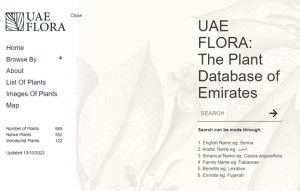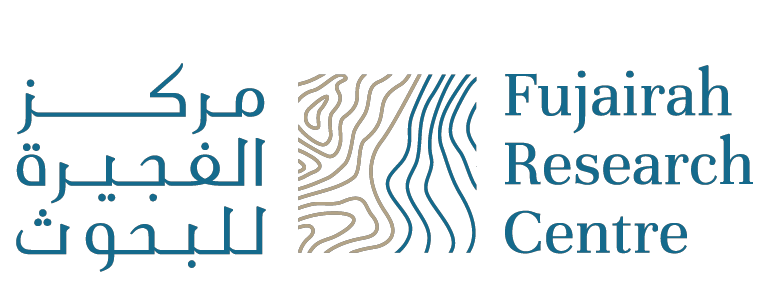
Exploration of the Native Plants from the Biodiversity of United Arab Emirates for Conservation and Reintroduction Efforts: Collection, Verification, Design, and Implementation of UAE Flora Database
Native plants are plant species that have evolved and naturally occur in a specific geographic region, ecosystem, or habitat without any human intervention or introduction. These plants have adapted to the local environmental conditions, including climate, soil types, and ecological interactions, over an extended period, typically thousands of years or longer. Native plants play a vital role in supporting biodiversity, ecosystem stability, and the overall functioning of their native ecosystems. The project aims at the development of a collaborative and user-friendly GUI and content-based database to publish and display native plants in the Emirate of Fujairah. Moreover, it allows researchers and general users to share their discoveries about new plants and their observations on ecosystem status. The UAE Flora development project has been divided into three phases. The first phase includes the literature search of more than 400 published articles, online resources, and books that belong to universities only, to identify over 760 native and adaptive plants. The whole literature search consists of two subsets of records. The first contains article citations. Articles used were published between 2012 and 2021. The second consists of bibliographic records describing monographs, journals, audiovisual materials, and online content from around the world. UAE Flora includes but is not restricted to resources available in the library. The database contains printed publications from 2003, 2005, 2006, and 2007.
The second phase includes the careful analysis of information about native plants and its authenticity, which includes correct information about origin, nativity, and availability. The Plants Database presents structured information about native and cultivated plants of the UAE. It includes common names in English and Arabic; botanical names; synonyms; growth form; plant type; area of collection; habitats; categories based on uses; plant description; benefits; remarks; the emirate in which the plant is located; images; and references. The project required combination of back-end and front-end development tools to establish a customized database.
The third phase focuses on the designing and development of the database and dashboard using front-end GUI technologies such as HTML, CSS, Bootstrap, JavaScript, Ajax, and jQuery, and back-end PHP (Laravel) and database in MySQL, ensuring the easy retrieval of all gathered and calculated information.
1.1. Hydro-Geological and Weather Conditions in UAE
The United Arab Emirates (UAE) accommodates three main geological zones. There are mountains from Dibba in the northeast to Al Ain in the southeast. Coastal lowlands are located along the eastern coastline, which extends from northeast to southeast along the Gulf of Oman, and the western coastline, which stretches the length of the country along the Arabian Gulf. These comprise the central desert as well as the dune plains to the south and west.The eastern coast also accommodates Wadi Wurayah National Park, which is declared a Man and Biosphere Reserve by UNESCO. Situated in the Shimayliyah mountain range of the Emirate of Fujairah, Wadi Wurayah contains more permanent surface water than any other section of the Hajar Mountains in the UAE, which provides a suitable habitat for a substantial proportion of the mountainous environment’s plant and animal species. Taking a comprehensive view, UAE has habitats that host species that show unique physiological, behavioral, and morphological features to survive under harsh environmental conditions. The climate of the United Arab Emirates is characterized by minimal precipitation, high temperatures, and high relative humidity. The country’s yearly mean temperature is 27 ◦C. The highest air temperature during the summer months can exceed 48 ◦C, while the minimum air temperature in the interior can drop to 3 ◦C from December to March. The month with the lowest average minimum temperature is January, with an average of 12 ◦C. These features have enabled plants species found in the UAE ecosystems to cope with higher levels of salinity and high temperatures that may reach up to 50 ◦C during summers.
1.2. Nutritional, Micro and Macro Mineral Values in Native Plants
These native plants not only have the ability to withstand extreme conditions such as salt and drought, but they also provide significant nutritional and mineral benefits. One study found that the amount of potassium in Vachellia flava was higher than that of wheat, rice, soybean, and chickpea, all of which are staple foods. Vachellia flava was shown to be an agro-economically beneficial plant with nutritional contents comparable to, and mineral values higher than, commonly used staple food crops. Similarly, the nutritional content of these natural plants has been evaluated to show that they provide a healthier diet for Arabian tahr.
1.3. Importance of Native Plants in Landscaping
The ideal plant species to choose when constructing a landscape are those that have adapted to the local environment, as they use water more efficiently and require less maintenance overall. Due to their ability to withstand both dry and moist conditions, plants native to the UAE are perfect for landscaping projects in arid lands. There are over 170 salt-tolerant plants identified previously in the UAE. Native or drought-tolerant plants can potentially outperform exotic ones in landscape designs with no need for further irrigation after planting. Native plants contribute to increasing the biodiversity of a particular landscape and restoring the habitat of wild animals by providing food, shelter, and other biological necessities. Ordinarily, newly planted ornamental plants require a lot of maintenance, are difficult to adapt to, and consume a lot of irrigation water and other resources. Using native plants in landscaping projects can help conserve limited resources, even though local plants are ideally adapted to the climate and soil conditions of the location. Natural landscaping may help restore a diversified native environment while giving parks and gardens a rustic aesthetic that represents national heritage and culture. Despite the vital role that native plants play in landscaping due to their environmental suitability, there is currently no comprehensive and verified list of these plants and their significance in multiple fields available for public and scientific purposes.
UAE Flora form is the start of a long-lasting mega-project, primarily focusing on developing a repository of native plants of UAE diversity with the goal to aid in knowledge sharing, conservation, and ecosystem protection. It is worth noting that the UAE Flora database is managed and maintained by a team of experienced plant specialists and researchers based at the Fujairah Research Centre.
